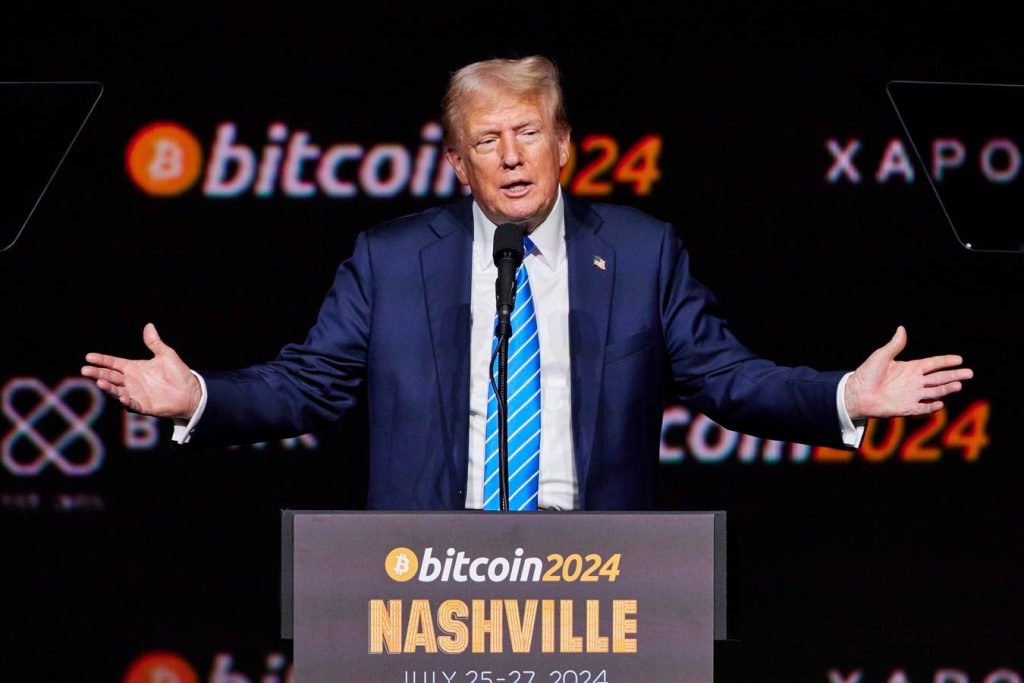The cryptocurrency landscape has undergone a dramatic transformation, emerging from a period of uncertainty and legal battles into a renewed era of optimism and growth. The arrival of Bitcoin and Ether exchange-traded funds (ETFs) in the U.S. marks a significant milestone, with Bitcoin ETFs already surpassing gold ETFs in terms of assets held. This achievement, coupled with a post-election market surge and promises of pro-crypto policies from the incoming administration, has rekindled the enthusiasm that characterized the early days of crypto, setting the stage for what some are calling a “golden age.”
The resurgence of bullish price predictions underscores the renewed confidence in the market. Experts envision Bitcoin reaching unprecedented heights, potentially reaching $200,000 or even $500,000, particularly if the U.S. establishes a strategic Bitcoin reserve. The prospect of such a reserve, while legally complex, could trigger a global wave of adoption driven by fear of missing out (FOMO). This, combined with a more favorable regulatory environment under the incoming administration, could significantly alter the trajectory of the crypto market.
A notable shift in the regulatory landscape is anticipated with the appointment of crypto-friendly officials to key positions within the U.S. government. These appointments signal a potential easing of regulatory pressures, paving the way for greater innovation and development within the crypto industry. The expected collaboration between the White House and Congress on crypto-related legislation, including market structure and stablecoin regulation, further reinforces this positive outlook. This shift in regulatory stance is expected to foster a more welcoming environment for crypto businesses and encourage the return of innovation to the U.S.
The anticipated influx of capital into the crypto market through initial public offerings (IPOs) and increased venture capital investment further bolsters the narrative of a crypto resurgence. Several prominent crypto companies, including Circle, Figure, Kraken, Anchorage Digital, and Chainalysis, are poised to go public, attracting further investment and mainstream attention. Simultaneously, a revived interest from venture capitalists and limited partners (LPs) is expected to fuel further growth, particularly in areas such as stablecoins and payments. This renewed interest in crypto investments indicates a growing recognition of the long-term potential of the asset class.
The increasing integration of crypto into traditional financial markets is evidenced by the inclusion of crypto-related companies in major stock market indices. MicroStrategy’s remarkable stock performance and potential inclusion in the S&P 500, alongside Coinbase, highlight the growing influence of crypto on the broader financial ecosystem. This integration is further driven by new accounting rules allowing companies to reflect their Bitcoin holdings at market value, potentially attracting more institutional investors to the crypto space.
The stablecoin sector is projected to experience exponential growth, potentially doubling in market capitalization, driven by anticipated legislation and increased adoption. While established players like Tether and Circle continue to dominate the market, new “stablecoin 2.0” models are emerging, offering innovative features such as revenue sharing with token holders and applications. The strategic acquisition of stablecoin platform Bridge by Stripe further underscores the growing importance of stablecoins in the fintech landscape, potentially revolutionizing financial services with their speed, efficiency, and global reach.
The tokenization of real-world assets (RWAs) is gaining momentum, with the potential to transform how assets are owned and traded. From real estate to art, tokenization offers benefits such as instantaneous settlement, reduced costs, and increased transparency. The projected growth of the tokenized RWA market to trillions of dollars signifies a paradigm shift in asset management, unlocking new opportunities for investors and businesses.
The convergence of artificial intelligence (AI) and crypto is generating excitement, with AI agents poised to play a significant role in the evolving crypto landscape. While still in its early stages, the development of AI agents capable of executing complex transactions and managing crypto assets holds immense potential. However, analysts caution against excessive hype, emphasizing the need for practical applications and sustainable development in this nascent field.
The underlying infrastructure of the blockchain industry is also undergoing significant improvements, with a focus on high throughput and scalability. The development of blockchains capable of processing thousands of transactions per second, comparable to traditional payment networks, paves the way for wider adoption and mainstream use cases. This enhanced infrastructure, coupled with the development of new applications and platforms, is essential for the long-term growth and sustainability of the crypto ecosystem.
In conclusion, the crypto market has transitioned from a period of uncertainty to a renewed era of optimism, driven by a confluence of factors including regulatory developments, technological advancements, and increased institutional interest. While caution remains warranted given the market’s inherent volatility, the potential for significant growth and innovation in the crypto space is undeniable. The coming years are likely to witness further evolution and maturation of the crypto market, with far-reaching implications for the global financial landscape.

